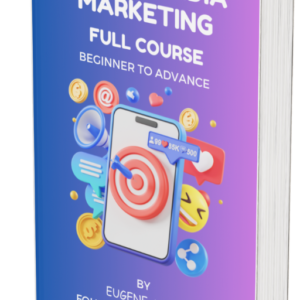Online advertising has become an integral part of marketing strategies for businesses of all sizes. With the rise of the internet and digital technologies, advertising has evolved to reach a wider audience and generate better results. In this blog post, we will explore everything you need to know about online advertising.
What is Online Advertising?
Online advertising refers to the practice of promoting products or services using the internet. It involves various advertising methods such as display ads, search engine marketing, social media advertising, email marketing, and influencer marketing.
Types of Online Advertising
1. Display Ads: Display ads are graphical advertisements that appear on websites, apps, or social media platforms. They can be in the form of banners, pop-ups, or videos.
2. Search Engine Marketing: Search engine marketing (SEM) involves placing ads on search engine result pages. It includes both search engine optimization (SEO) and pay-per-click (PPC) advertising.
3. Social Media Advertising: Social media advertising allows businesses to reach their target audience through platforms like Facebook, Instagram, Twitter, and LinkedIn. It offers precise targeting options based on demographics, interests, and behaviors.
4. Email Marketing: Email marketing involves sending promotional messages or newsletters to a targeted list of email subscribers. It is an effective way to nurture leads and build customer relationships.
5. Influencer Marketing: Influencer marketing involves collaborating with influencers or individuals with a large following on social media platforms. They promote products or services to their audience, generating brand awareness and driving sales.
Benefits of Online Advertising
1. Wide Reach: Online advertising allows businesses to reach a global audience. With the internet’s widespread use, businesses can target customers from different geographical locations.
2. Targeted Advertising: Online advertising offers precise targeting options. Businesses can define their target audience based on demographics, interests, behaviors, and online activities.
3. Cost-Effective: Compared to traditional advertising methods, online advertising is often more cost-effective. Businesses can set their budgets and only pay for the desired actions, such as clicks or conversions.
4. Measurable Results: Online advertising provides detailed analytics and insights. Businesses can track the performance of their ads, measure the return on investment (ROI), and make data-driven decisions.
Best Practices for Online Advertising
1. Define Clear Objectives: Before starting an online advertising campaign, businesses should define their objectives. Whether it’s increasing brand awareness, driving website traffic, or generating sales, clear goals will guide the campaign.
2. Understand the Target Audience: It’s crucial to understand the target audience’s demographics, interests, and online behavior. This information will help in creating compelling ads and targeting the right audience.
3. Use Compelling Ad Creatives: The visual and textual elements of an ad should be attention-grabbing and compelling. Clear and concise messaging, high-quality images or videos, and strong call-to-action (CTA) buttons can improve ad performance.
4. Test and Optimize: Online advertising requires continuous testing and optimization. Businesses should experiment with different ad formats, targeting options, and messaging to identify what works best for their audience.
Conclusion
Online advertising has revolutionized the way businesses promote their products or services. It offers a wide range of advertising methods, precise targeting options, and measurable results. By following best practices and understanding the target audience, businesses can leverage online advertising to achieve their marketing objectives.



